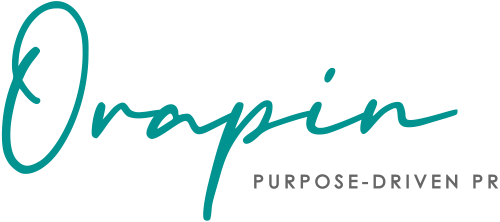
As PR professionals, storytelling is the name of our game. Helping share the stories of the organizations we represent, especially those driven by mission and purpose, is what we do best. If people don’t know what you do in this world, who you serve, and how you make an impact then how can they, in turn, support you? It seems like a simple equation. Organizations collect stories, testimonials, case studies, etc., share those stories, and as a result increase awareness, trust and credibility, and incite engagement and support. But maybe it’s not so simple. Especially when organizations serve sensitive and vulnerable populations.
It is at this juncture that the idea of “responsible storytelling” comes into play. What is responsible storytelling? In short, it refers to a mindful and empathetic approach to storytelling which balances both the needs of the organization and the individuals whom the organization serves. Responsible storytelling is especially important when organizations support members of vulnerable populations who are willing to share their inspiring, yet sensitive, stories to help build awareness for a cause. At its crux, responsible storytelling maintains an open dialogue between all stakeholders and balance between each stakeholder’s needs.
To illustrate, take this example, adapted from a real-life scenario. As a child, Susie Smith experienced ongoing abuse from a close family member. The series of traumatic experiences resulted in Susie experimenting with drugs as a teenager and ultimately a full-fledged drug addiction by her early twenties. Susie luckily found the therapy she needed through an addiction recovery center which helped her get clean and back on track with her life. Susie was so grateful for the support she received, that she agreed to give the organization her photo and allowed them to share her success story in an e-newsletter. Each stakeholder in this case – both Susie and the organization – were pleased with the outcome. Six years later, Susie’s husband Bob saw her photo on a large interstate billboard with a quote from the original newsletter. Susie was rightfully quite upset. She never agreed to have her photo used as ongoing marketing material for the organization and especially did not want her face on a billboard. What if she had suffered a relapse in the past six years? What if the now public knowledge of Susie’s past struggles with addiction affected her job? Why wasn’t she consulted before her personal life was splashed across a giant advertisement?
This example illustrates the importance of ongoing dialogue as an integral part of responsible storytelling. Organizations that work with sensitive populations, as well as the PR and marketing firms that serve them, must continually ask themselves if they are using communications in the best interest of all stakeholders. Here are a few questions we should all consider as we approach this delicate topic.
1. What are the possible consequences to the individual of having their personal story made public, versus the benefits that the organization will receive as a result of sharing it? Success stories are wonderful ways to showcase impact, but could they be detrimental to the storyteller at some point down the road?
2. Who owns the story? Personal stories are just that – personal. Though an organization may play an integral role in an individual’s story, it is still the individual’s story to tell, and theirs to keep. Organizations should consider these personal stories “for lease.” If an individual wants to redact a story from the public eye, that is their prerogative. Storytellers should always have the opportunity to review and approve any and all uses of their story.
3. How do organizations then protect their owned content? Organizations may put a lot of work into producing these profile pieces; however, it is the right of the individual profiled in the story to request their information removed from the public eye. Organizations must understand that stories are subject to change and as a result, must consistently curate new content and find new stories to tell. Personal stories and testimonials should be kept fresh and timely.
4. Who are we writing for versus who are we writing about? As communicators, we tailor our stories to our audiences – our customers, clients, donors, funders, supporters. But in doing so, we need to be aware of the extent to which an individual’s story is shaped to benefit the organization’s needs. Story distribution strategies must address the needs of the storyteller and designed to benefit them and their local community as opposed to primarily serving the organization’s agenda.
The nebulous nature of personal stories makes for ongoing communications challenges. As long as organizations are conscious of their responsibility to be mindful, empathetic, and appreciative of an individual’s experience, then we can all work together to maintain our individual responsibilities in storytelling. That does not mean we should go so far as to avoid these stories altogether, for these are the stories that demonstrate impact and positive change. When used appropriately, they can be incredibly powerful and beneficial to all stakeholders. The most important takeaway is that each party involved must maintain an open and respectful dialogue to ensure each individual’s needs are appropriately met both today, tomorrow, and 10 years down the road.

Diana Crawford is a seasoned public relations consultant with more than 15 years of agency, consulting, and in-house experience. She joined Orapin in 2013 and manages account services and client communications strategy development. She has worked across a variety of industries and has expertise with professional services, food/alcohol, health and wellness, lifestyle, sports, education, tech, and non-profit organizations.
